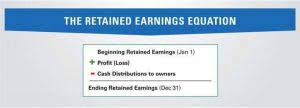
Contingent liabilities are a little different since they are liabilities that might occur. This usually happens because a liability is dependent on the outcome what are liabilities in accounting of some type of future event. For example, if your business is facing a potential lawsuit then you would incur liability if the lawsuit becomes successful.
How confident are you in your long term financial plan?

Liabilities are aggregated on the balance sheet within two general classifications, which are current liabilities and long-term liabilities. You would classify a liability as a current liability if you expect to liquidate the obligation within one year. If there is a long-term note or bond payable, that portion of it due for payment within the next year is classified as a current liability. Most types of liabilities are classified as current liabilities, including accounts payable, accrued liabilities, and wages payable. A liability is an obligation of a company that results in the company’s future sacrifices of economic benefits to other entities or businesses.

Contingent Liabilities

Understanding the criteria and measurement methods for liabilities helps organizations maintain a clear and confident financial position while facilitating informed decision-making. Simply put, a business should have enough assets (items of financial value) to pay off its debt. Current liabilities are used as a key component in several short-term liquidity measures. Below are examples of metrics that management teams and investors look at when performing financial analysis of a company. It might signal weak financial stability if a company has had more expenses than revenues for the last three years because it’s been losing money for those years.

What are the different types of liabilities found on a balance sheet?
Having a better understanding of liabilities in accounting can help you make informed decisions about how to spend money within your company or organization. FreshBooks Software is a valuable tool that can help businesses efficiently manage their financial health. Basically, these are any debts or obligations you have that need to get paid within a year. It’s important to keep a close eye on your current liabilities to help make sure that you have enough liquidity from your current assets.
- Bonds are essentially contracts to pay the bondholders the face amount plus interest on the maturity date.
- A liability is an obligation of money or service owed to another party.
- On a balance sheet, liabilities show a company’s financial obligations to its lenders and creditors due to past transactions.
- Liabilities in accounting are any debts your company owes to someone else, including small business loans, unpaid bills, and mortgage payments.
- Our article about accounting basics discusses in detail the concepts you need to understand small business accounting.
They can be listed in order of preference under generally accepted accounting principle (GAAP) rules as long as they’re categorized. The AT&T example has a relatively high debt level under current liabilities. Other line items like accounts payable (AP) and various future liabilities like payroll taxes will be higher current debt obligations for smaller companies.

Resources for Your Growing Business
Liabilities can help companies organize successful business operations and accelerate value creation. However, poor management of liabilities may result in significant negative consequences, such as a decline in financial performance or, in a worst-case scenario, bankruptcy. Companies of all sizes finance part of their ongoing long-term operations by issuing bonds that are essentially loans from each party that purchases the bonds. This line item is in constant flux as bonds are issued, mature, or called back by the issuer. Liabilities are a vital aspect of a company because they’re used to finance operations and pay for large expansions. A wine supplier typically doesn’t demand payment when it sells a case of wine to a restaurant and delivers the goods.
How are assets and liabilities related and treated differently in financial statements?
Accounts Payable refers to the amounts owed by a company to its suppliers or vendors for goods or services received, but not yet paid for. Examples include invoices from suppliers, utility bills, and short-term debts. Accounts payable is typically presented on the balance sheet as a separate line item under current liabilities. Liabilities are an operational standard in financial accounting, as most businesses operate with some level of debt.
- A liability, like debt, can be an alternative to equity as a source of a company’s financing.
- Understanding the criteria and measurement methods for liabilities helps organizations maintain a clear and confident financial position while facilitating informed decision-making.
- The portion of the vehicle that you’ve already paid for is an asset.
- The total liabilities of a company are determined by adding up current and non-current liabilities.
- For example, a bakery delivering goods to a coffee shop three times a week may choose to invoice the shop monthly instead of expecting payment during each delivery.
- Basically, these are any debts or obligations you have that need to get paid within a year.
- They are short-term liabilities usually arisen out of business activities.
Navigating the world of finance can feel like a complex task, especially when it comes to understanding the different components that make up a balance sheet. Liabilities are one of the important components of a balance sheet, yet they are often tricky to understand. Liabilities refer to short-term and long-term obligations of a company. Liabilities don’t have to be a scary thing, they’re just a normal part of doing business. Because chances are pretty high that you’re going to have some kind of debt.
Debits and Credits in Accounting: A Simple Breakdown
Different types of liabilities are listed under each category, in order from shortest to longest term. Accounts payable would be a line item under current liabilities while a mortgage payable would be listed under long-term liabilities. Simply put, liabilities are any current debts that your business owes.
